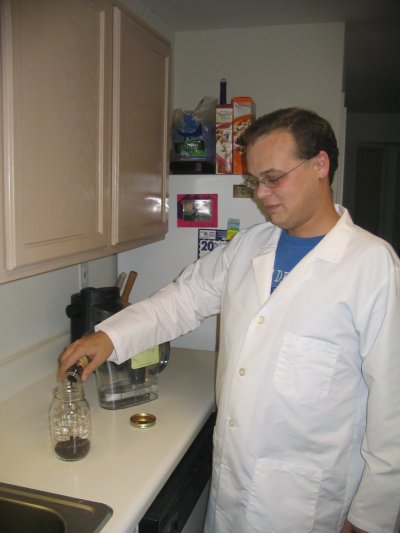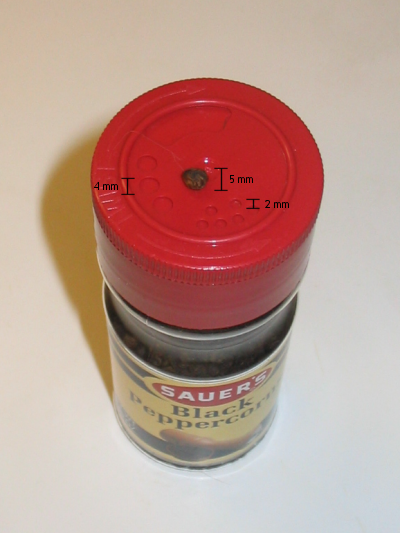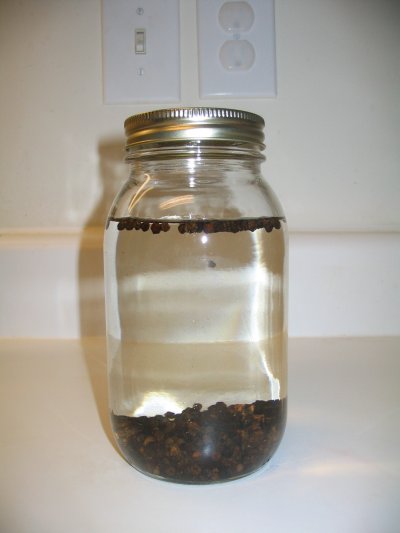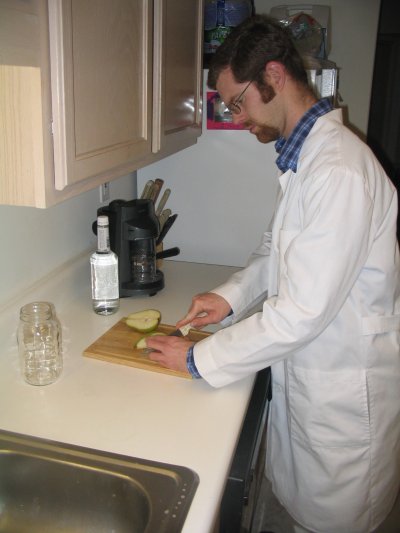 In a little over a year of running Infusions of Grandeur, we have learned a multitude of valuable lessons -- both about creating infused vodka and about running a successful blog, neither of which we had ever done before (LiveJournals don't really count). As we've said many times before, our readers have taught us at least as much as we hope we have taught you. We decided to take some time at the dawn of the new year to discuss some of these lessons we have learned.
In a little over a year of running Infusions of Grandeur, we have learned a multitude of valuable lessons -- both about creating infused vodka and about running a successful blog, neither of which we had ever done before (LiveJournals don't really count). As we've said many times before, our readers have taught us at least as much as we hope we have taught you. We decided to take some time at the dawn of the new year to discuss some of these lessons we have learned.
- Our first few infusions ran at room temperature, but then we began to keep our fruit- and vegetable-based experiments in the refrigerator, fearing that the heat may have been detrimental to our original apple experiment. Over a great deal of time, we have come to realize that other factors were at play there, and that refrigerating our infusions (a practice that we continued until recently) may be doing more harm than good, or at least slowing them down. We have decided that refrigeration is probably not necessary in most circumstances. We haven't yet proven this in a scientific, side-by-side comparison, though we may perform such a test at some point; in the meantime, we're keeping all of our experiments at room temperature. If we're concerned about spoilage despite the alcohol content, we will replace the ingredients periodically, as we learned to do with apples.
- Record keeping is absolutely essential. Despite a sound sense of experimental design, the Mad Scienticians have sometimes been slack about noting the dates when we performed experiments or the methods used. Many times, when writing up the results of an infusion, we've scrambled to figure out how long it has run and crossed our fingers that the timestamps on our photos are correct. We quickly learned to keep notepads in the lab to jot down our impressions of a vodka, but timing has hounded us. Nowadays, we keep two tracks of experiment data on Google Calendars -- one for scheduling, and one to note when things actually happen. Things still occasionally fall through the cracks, as did our recent jalapeño restocking, but it's become much easier to keep track of our ongoing and past infusions.
- Along the same lines, a plan is always a good idea. In the first era of Infusions of Grandeur, before the summer hiatus, though we were nearly religious about beginning a new infusion each week, we often didn't settle on an ingredient until the day we were to begin the experiment. This sometimes forced us to rush through the methodology stage, and led to some poor choices. The frustration of these "oh shit" moments was one of the reasons that our posting dropped off over the summer.
Our calendars have alleviated this as well. We now hold a planning session every two weeks, deciding what experiments should come next and planning the next two weeks of posts. Not all of these posts happen when we plan, but we get a framework that sustains our momentum. It is odd to say it, being the duo who once established the catchphrase "plans are overrated," but this blog is a lot more fun now that we plan it better.
- Only sample an infusion for quality while sober and with a clean palate.
- An infused vodka can taste terrible straight, and still be useful in cocktails. I reacted very poorly to my first taste of ourcoffee infused vodka, but rather liked the Saturday Morning Coffee we created with it. Likewise, a vodka that tastes delicious in a straight form can prove very difficult to find a use for. Our cantaloupe vodka is spot-on in flavor, but seven months later, we still have yet to use it in a cocktail.
- Sometimes, the infusions that seem quick and easy are going to take much longer than you expect. We were hoping that our coconut vodka would be done in a week or two; instead, it took over a month. We also found that "easy-open" coconuts are still a pain in the ass to get into.
- Sweets are good, but don't always make a good vodka infusion (or solution). Our caramel vodka is one of our most-used creations (in large part due to its presence in the WMD). On the other hand, we never have made a chocolate vodka with quite the right consistency. Furthermore, our Peeps and candy cane vodkae were, unsurprisingly, disasters; but they were still a lot of fun to write about.
- Some infusions should only be made when the ingredient is in season. Our coconut and peach vodkae probably fell victim to this.
- Don't be afraid to mess with a good thing. The aforementioned WMD, the most successful cocktail we've created and Wayland's favorite of all time, was developed by tweaking the highly-rated Untitled Cocktail #1, which itself was a modification of the Caramello Martini.
- After finishing a fruit-based vodka infusion, for pete's sake, don't eat the fruit.
- Dress for the part.
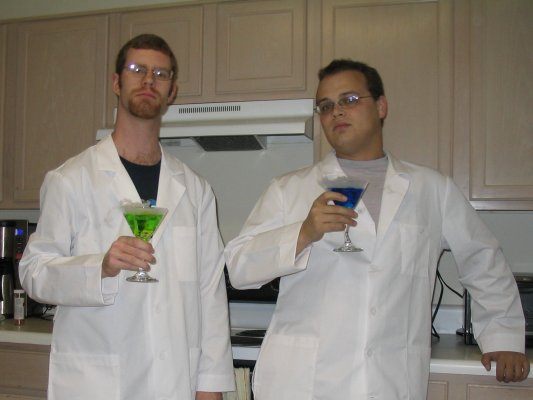
![]() Our pear infused vodka experiment is complete, but we have not been able to make time for a tasting as of yet. We'll have that ready very soon, but in the meantime, we have started another experiment: pepper vodka, or to be specific, peppercorn (black pepper) vodka. In the past, we have spiced up our vodka with jalapeños and even habaneros; this time, we decided to try the more traditional flavor of pepper vodka.
Our pear infused vodka experiment is complete, but we have not been able to make time for a tasting as of yet. We'll have that ready very soon, but in the meantime, we have started another experiment: pepper vodka, or to be specific, peppercorn (black pepper) vodka. In the past, we have spiced up our vodka with jalapeños and even habaneros; this time, we decided to try the more traditional flavor of pepper vodka.